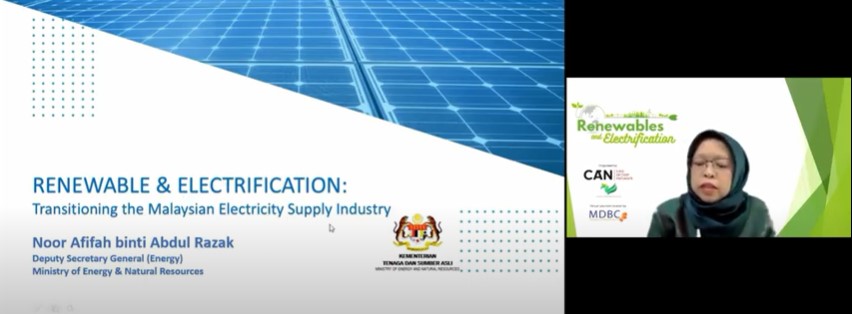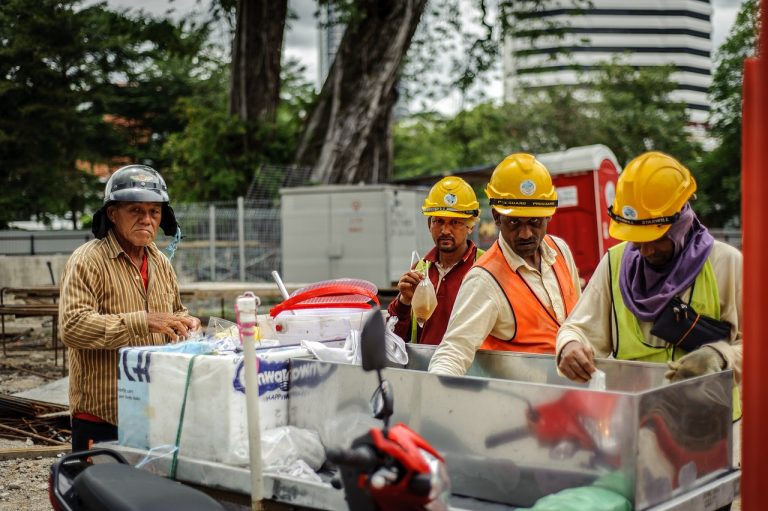Last month, power heads across Malaysia came together to discuss the country’s carbon journey as part of a roundtable series by Climate Governance Malaysia.

It was acknowledged that the largest contributor of greenhouse gas (GHG) emissions is the power sector. 72% of emissions stem from energy production; the remaining being caused by activities like farming, livestock, and chemical reactions necessary to produce goods and raw materials.
Despite this, the power sector is seen as the easiest sector to decarbonise. “GHG emissions can be reduced through greater electrification, especially in transport and industry; alongside using renewable energy as a source of power,” said Adnan Zainol Abidin, Executive Vice President & CEO at Gas & New Energy, PETRONAS.
Priming for solar’s popularity

In Malaysia, more than 90% of the nation’s new renewables requirements consist of solar energy. “As much as solar has a high potential, SEDA is also trying to explore a more diversified mix of hydro, biomass, and biogas,” shared Ibrahim Ariffin, Director of Strategic Planning at the Sustainable Energy Development Authority (SEDA).
“However, looking at years of our Feed-in-Tariff (FiT) operation, the prices of these resources are not going down, mainly due to additional fuel supply arrangements and environmental contribution requirements,” he added.
Davis Chong, President of the Malaysian Photovoltaic Industry Association (MPIA) stated, “It is proven that solar is the winner in terms of renewables in Malaysia. It is the best renewable energy to deploy in terms of cost and implementation scalability. From the demand side, the Large-Scale Solar (LSS) and FiT pickup rate shows that the market wants much more than what we can supply.”
The true cost of integrating solar
Today, the penetration limit of solar PV into the grid is set at 24%. The rationale for this limit is centred on system readiness, as Malaysia’s grid is not yet equipped to handle high amounts of variable renewable energy like solar.
“Having more solar also requires increasing the robustness of our grid, digitisation upgrades, and ramping up our capacity as we need to address the intermittency of solar.”
Noor Afifah Abdul Razak, Deputy Secretary General of the Ministry of Energy and Natural Resources (KeTSA) further elaborates, “While it is true that the cost of solar has gone down by 59.4% since we first launched our large-scale solar (LSS) in 2016, we are seeing an increase in the cost of integrating solar into our system. Having more solar also requires increasing the robustness of our grid, digitisation upgrades, and ramping up our capacity as we need to address the intermittency of solar.”
Charanjit Singh, Chief Executive Officer at Single Buyer agreed, saying, “We are supportive of renewables, but the costs of going solar without any barriers will have implications. The costs are real, and so are issues relating to system stability.”
Opening market access
Initiatives like Tenaga Nasional Berhad (TNB)’s Grid of the Future are seen as crucial investments to upgrade existing infrastructure to be renewables-ready. However, the cost for such an enormous task remains a complex subject. Which party should bear the cost of the investment – Government, consumers, private players, or all three?
Dr. Jay Mariyappan, Head at New Energy, PETRONAS shared, “Electricity pricing should be true to the market and devoid of implicit subsidies. A lack of competition in the distribution sector and persistent underpricing of electricity have weighed on performance in some markets.”
Dr. Jay also stated that by limiting the solar penetration at 24%, the investment landscape is affected. He argues that by opening market access and deregulating the market, greater efficiency and affordability can be achieved through competition.
Additionally, he stated, “In regulated markets, unbundling our electricity systems is key. Third party access and deregulated retail segments should be implemented to accelerate growth of renewables.”
According to Charanjit however, the industry needs to proceed with caution: “If we are trying to veer away from the market that exists now, to a more open market – theoretically, cost could come down with more players, but that is not a given. So policymakers have to balance these two ends of the equation carefully. We need to be mindful of these constraints”.
Ancillary services to enable solar
Battery storage is one solution to unlocking solar’s potential. According to the Energy Commission’s 18-year plan, battery storage systems will be introduced from 2030 onwards to support the influx of renewables.
Charanjit shared, “In Western Australia, operators were able to smoothen the curve of solar intermittency by incorporating battery storage into its system. Breakthrough for solar will really come when battery storage costs decrease significantly.”
 Ibrahim added, “During the third round of the Large-Scale Solar (LSS) tenders, none of the applicants attached a storage mechanism to its proposal. This was due to the cost at that time; hence a cost recovery mechanism is needed.”
Ibrahim added, “During the third round of the Large-Scale Solar (LSS) tenders, none of the applicants attached a storage mechanism to its proposal. This was due to the cost at that time; hence a cost recovery mechanism is needed.”
The solution may lie in delivering correct market signals to private players. “In the UK, investors now have the right market signals that tell them that energy storage is a go from an economic view. So you’ll see LED storage increasingly being incorporated into the system. Companies are becoming more innovative in coming up with Behind-the-Meter solutions,” pointed Dr. Jay.
David concurred, adding, “There are a lot of investors interested in enabling renewables capacity into the grid, so we need to open these opportunities to the market. A lot of countries have also been selling storage as a subscription or service model. This is something we can explore in Malaysia where huge capital expenditure is not required from the authority’s side to enable greater energy storage.”
Charanjit concluded, saying “Ultimately the theme is to move from centralised to decentralised setup. Going forward from a Single Buyer market, this movement of allowing investment by other parties to provide ancillary services like battery storage is definitely an option to explore.”
A message to the private sector
Today, corporations like PETRONAS are already embarking on a green transition, and fast. “Petronas is the first gas company in Asia to set a net-zero target, with plans to greenify their assets both onshore and offshore, including the supply of renewable energy,” stated Dr. Jay.
Consideration must be given to the social, financial, and technological impact of the roadmap
Most multinational companies and RE100 companies have already set forth sustainability initiatives. To support these corporations, green power purchase & sale agreements between corporations are encouraged, and the Government should explore implementing renewable purchase obligations or certificate schemes.
As regulators and authorities join heads to determine the country’s carbon-zero future, consideration must be given to the social, financial, and technological impact of the roadmap. The way forward requires a clear signal for the industry not only until 2035, but beyond, so corporate players can take full advantage of the opportunities available.
The policy devised must be clear and predictable if the private sector is expected to fulfil their role in driving the country’s sustainable development goals. Finally, as concluded by Noor Afifah, “We have to transition in our own way, the Malaysian way.”


